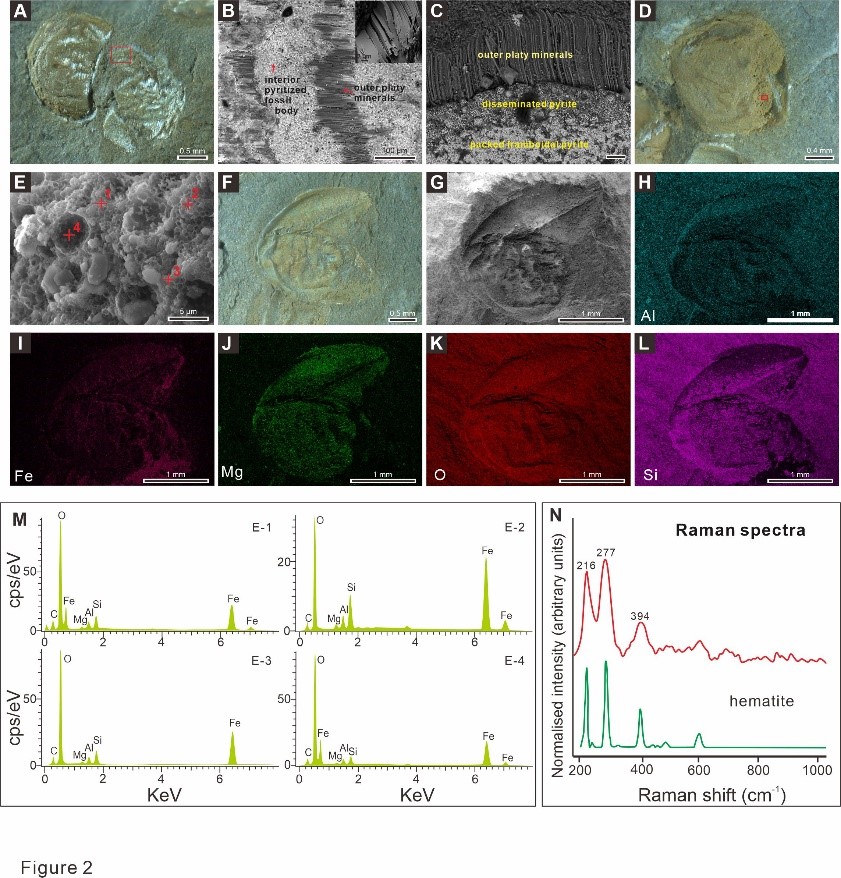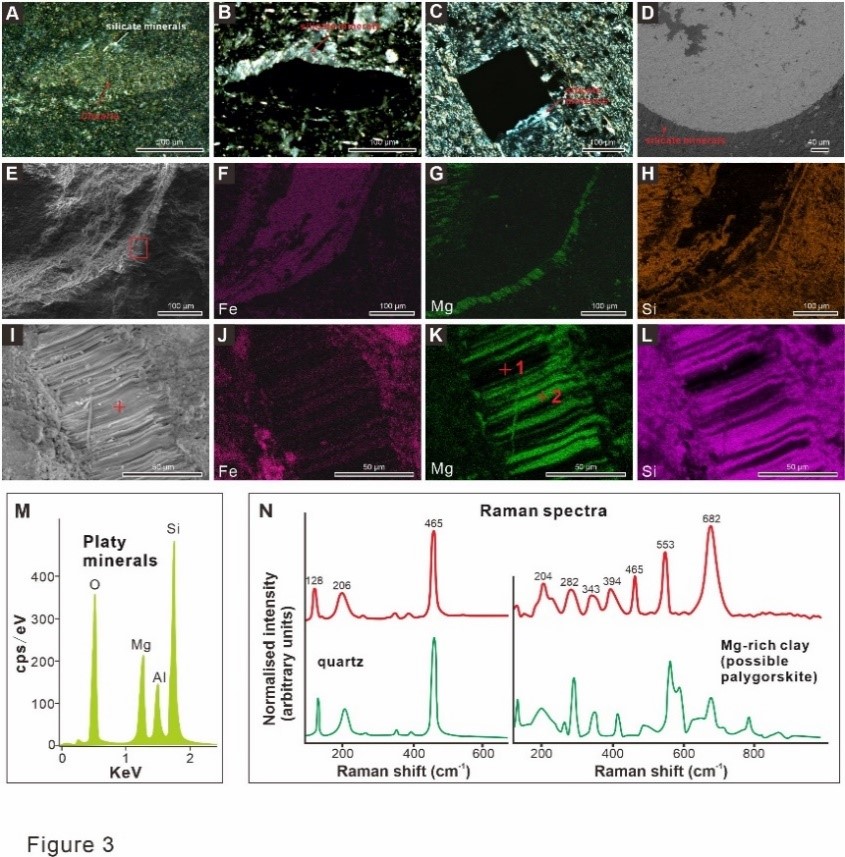The Lantian biota, discovered from the Ediacaran basinal-facies deposition of the Lantian Formation near Lantian Town of the Anhui Province, South China, yields an assemblage representing one of the oldest known complex macrofossils. These fossils are preserved on the bedding surface of black shales in the middle part of the Lantian Formation, and their age was estimated at approximately 600 Ma.
The Chuaria fossils usually with spheroidal or disk-like shapes, are the most common macrofossils in the Lantian biota. Although great majority of the Lantian Chuaria fossils are preserved as carbonaceous compressions, Chuaria has been reported to be commonly preserved as pyritization enveloped by aluminosilicate minerals in the upper Member II of the Lantian Formation. The outer minerals that envelope the pyrite layer have been assigned to quartz or aluminosilicate clay minerals. However, their exact mineral compositions as well as whether these minerals have contributed to the exceptional preservation of Ediacaran Lantian Chuaria remain unclear.
Dr. WANG Wei and her research group from the Nanjing Institute of Geology and Palaeontology, Chinese Academy of Sciences (NIGPAS) employed light microscopy, field emission scanning electron microscopy (FESEM), energy-dispersive spectroscopy (EDS), and Raman spectroscopy techniques to revisit the preservation of pyritized Chuaria from the Lantian biota.
"Our taphonomic experiments show Chuaria fossil pyritization occurs at early fossilization process and has contributed to the soft-tissue preservation." Wang says. "The pyritization process is probably divided into at least two stages, which are characterized by distinct pyrite crystal morphologies."
The pyritized Chuaria fossils are enveloped by platy minerals that are a complex mixture of quartz and magnesium-rich aluminosilicates. Integrated mineral and structural pattern analyses show that these quartz and clay minerals are both secondary overgrowth on Chuaria internal mold, which probably formed as a diagenetic product concurrent with carbonate dissolution in the Lantian black shales. Their formation is probably regulated by local micro-environment near the Chuaria bodies. These enveloped minerals may facilitate preservation and identification of Chuaria fossils, but they are probably not involved in the initial fossilization process as the early diagenetic pyritization has done.
This research was supported by the National Natural Science Foundation of China, the Strategic Priority Research Program of the Chinese Academy of Sciences, and the Science and Technology Research Project for the Research Institute of Petroleum Exploration and Development, CNPC.
Reference: Wang Wei*, Guan Chengguo, Zhao Xianye, Fang Yan, Zhou Chuanming, Yuan Xunlai (2022) Taphonomic study of Chuaria fossils from the Ediacaran Lantian biota of South China. Precambrian Research, 369: 106529. https://doi.org/10.1016/j.precamres.2021.106529.

Fig. 1 Images of the Chuaria fossils

Fig. 2 Elemental mapping and Raman spectroscopic investigations on platy minerals

Fig. 3 A simplified cartoon showing Chuaria fossilization process
Contact:
LIU Yun, Propagandist
Email: yunliu@nigpas.ac.cn
Nanjing Institute of Geology and Palaeontology, Chinese Academy of Sciences
Nanjing, Jiangsu 210008, China
